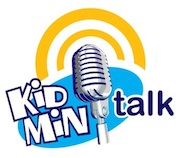• Christmas Potpourri
Christmas Potpourri
By Barney Kinard
Christmas greetings to you! Here is an assortment of ideas to make Christmas more meaningful for your family. Select the ideas that seem appropriate to your family’s needs and interests. Trying one new idea could start a family tradition for your family.
1. Kids Decorate Their Rooms.
Of course, you will need to help the younger ones. Keep it simple, but meaningful. Try a creche on top of the dresser or a string of lights or make a creative village scene.
2. Make Birthday Cards for Jesus.
You can feature the different names of Jesus based upon Isaiah 9:6. You can do this on poster board or some index cards.
3. Make a Christmas Mural or Banner.
Provide a blank piece of butcher paper or white felt and create your own version of the Christmas story, i.e., creche scene, Christmas banner, Christmas tree-base cloth, or poster.
4. Decorate Your Windows.
Paint your front window with poster paint. Free form designs look very festive when light shine through. You select the appropriate window(s) and how much window to paint.
5. Design Your Own Christmas Cards.
You could design an original one just for grandparents or special family friends. You can remake cards by cutting up old cards.
6. Frame Your Children’s Pictures.
These make excellent and memorable gifts for adult relatives. You might want to add their school picture to it.
7. Try the “Secret Pal” Drawing.
Draw names within your family on the first Sunday of Advent, and then all during the advent season do special favors for this “secret pal.” On Christmas Eve (Dec 24), reveal your secret person to one another.
8. Go “Christmasing!”
This is where you gather gifts of baked goodies and deliver them to the neighbors and friends of your children. It is a wonderful time for the children to visit friends and see other homes at Christmas.
9. Go Caroling with Others!
It is a good time for sharing the good news of Christ coming with the familiar music of the season. You might visit those who are home alone (without family) or visit a convalescent home. Consider going with another family.
10. Include Others in Your Celebrations.
Are you aware of persons who would appreciate being included in your family celebrations? Is there someone in your church family” who needs a visit? Christmas can be a really lonely time for some. Include others with your family.
11. Giving of “Yourselves”
Children can give “work coupons” to parents (i.e., I will clean the garage; or I will dust the living room.) and parents can give their children gifts of their time (i.e., I will give you one hour of my time; or I promise to take you to one ball game.) Coupon books really work! Coupon books last a long time.
12. Have a Special “Jesus Present” Box.
Deposit the slips of paper here with a description of a “loving deed” that was done. Then on Christmas Day you read the “loving deeds” that were done for Jesus. Thank God for His indescribable gift and for chances to share His love to others.
13. Here is a “Bold Idea!”
What would happen if you limited your gift buying to only one gift per family member and then asked God to show you how you could use the extra money to proclaim the good news of Savior? You could adopt a needy family or a mission organization.
This is just a thought.
14. Write a Letter to Jesus!
Thank Him for all your gifts and especially the gift of Himself coming for us.
15. Let us Remember Church Leaders
You child could be encouraged to choose or make a gift for his Sunday school teacher, pastor, or another church leader. Allow the children to wrap the gift themselves. It might be framed artwork or a picture.
16. Make Room for More!
In preparation for Christmas, clean out the closets, drawers and toy boxes of your children. Plan together what could be given away to a child who could really use these extra clothes and toys. Deliver the “love package” together. This makes room for new presents.
17. Try A Variation of the Nativity Set!
You could put a different figure in front of a family member’s plate at dinner. That evening ask each person to share what that character gave at Christ’s birth (i.e., Joseph gave Jesus a home, the angels gave good news announcement and a song of praise).
18. Give Your Child a “Life Notebook!”
The “Life Notebook” is for collecting life memories. It could include pictures of your child, your family, and his friends. Try to encourage your child to add to his own notebook as a reminder of what God is doing in his life. (i.e., goals, some accomplishments, answered prayers, family travels, etc.)
19. “Quiet Places For Quiet Times”
Use this time to remember that Christmas is about Jesus and His coming. Try to create moments for silence and solitude this season.
Reflective moments could change the hassle of the season to the refreshment of the season.
This could help you focus on the real meaning of the holiday with its conflicting messages.
20. Help Plan a Family Time.
You might let your children help to plan your special Christmas Eve or morning family worship time (i.e., a story to read, a poem to recite, a prayer, a song, a short pantomime).
20. Develop a New Family Tradition!
What is unique and significant about your celebration of Christmas? Can you try to add something different this year? You are building lasting memories for your child by the way you keep doing this celebration.
21. “Traveling Nativity”
Use a creche at the child’s height for storytelling, informal teaching, or as an interest center. You could use the Shepherd figures early in the Advent season, and have them make their journey throughout the living room, arriving at the manger on Christmas Day. The three kings could arrive after Christmas on their journey to Jesus, etc.
22. Have a Birthday Party for Jesus!
Prepare a special cake for the occasion, sing happy birthday, Christmas carols and offer symbolic gifts representing gifts for Jesus. Maybe invite the neighborhood children and show the Jesus Film for Children to them.
23. Fetch Your Tree Together!
Let your children have a voice in the selection of the tree and let them help
decorate it. Be sure to include some homemade decorations. Try to make it fun so they are glad they were a part of it this year.
24. Create An Advent Wreath!
The advent wreath is a set of five candles in a decorative wreath. Each week prior to Christ’s birthday, another candle is light to remember the events prior to His birth. The center candle is light on Christmas Day to remind us of the Savior’s birth. For more information on creating an advent wreath, (see “Advent” in the www.Kidology.org website)
“The challenge of Christmas is that in Jesus we see with absolute clarity, that God cares and shares, and if God cares and shares, so must we.” By William Barclay
Another Kidhelper Resource from…
Creative Children’s Ministries
© 2003, All rights reserved, Permission granted for use in local church ministry only. Do not reprint or publish without prior written permission from CCM or Barney Kinard
• Can Christians Do Magic?
Should a Christian Do Magic or Conjuring?
By Robert H. Hill
Doesn’t the Bible forbid magic, fortune-telling and ventriloquism? Is it right for a Christian to be involved in sleight of hand and illusion–aren’t these instruments dishonest and deceptive?
A Problem of Vocabulary
First, let’s get our terms defined. When the Bible (especially certain translations) uses the term “magic” (e.g. Exodus 22:14) or “sorcery” (Deuteronomy 18:11 et al.) or “ventriloquism” (e.g. Isaiah 8:19), it is clearly dealing with man’s involvement in the supernatural, often with the collaboration of evil spirits. The context of the Bible’s prohibitions makes it clear that God does not want man to dabble in games with the devil. Today’s manifestations of these forbidden activities are such things as “Ouija” boards, tarot cards, the occult and horoscopes. The Christian has no business playing with these, since they open the door to demonic influence.
Let it be emphasized that no true Christian magician or ventriloquist is in any way involved in the use of supernatural powers.
A problem rises from the fact that certain words have two meanings. “Magic” has the meaning of witchcraft or sorcery, but the word also means sleight of hand and illusion, the surprising and fascinating modern entertainment medium. Obviously the Bible is talking about the first of these meanings and not the second.
Etymologically, the word “ventriloquism” means “belly-talking.” As used in the Old Testament, the word refers to fortune telling by means of reading the entrails of slain animals, or demon possession, wherein an evil spirit spoke through a human mouthpiece. Modern ventriloquists create the illusion that their voices come from another source, using this to entertain. Spectators unable to explain this skill misnamed the illusion “belly talking.” Again, the Biblical prohibition has reference to one meaning of this word, but not the animation of puppets as is done in the modern entertainment medium. The first thing we must be sure of when dealing with Biblical prohibitions is that we understand what the Bible is in fact saying, so that we do not misapply the truth because of a confusion in vocabulary.
• Averting a Train Wreck
When asked to describe our mentoring experience with a Metaphor, my student offered—“it was like preventing a train wreck!” The diesel engine was going downhill fast, too fast, and getting faster. Things were getting out of control. The full-weight of the train cars were pushing from behind—creating a potential collision course. All attempts to slow things down seemed hopeless. The program was growing. She was getting more afraid with every mile downhill. A dangerous derailment seemed certain. She was in a panic.
She signed up for the Kidology Coaching Program. “Right away, my coach helped me to bring some pace and order to my chaotic ministry ride. We methodically managed to slow the runaway train down. My frantic pace was becoming manageable and the feared train wreck was averted.” Ahhh, some relief!
Once the train wreck was averted, we settled into working together on her whole program. “I am now beginning to understand how momentum works. I am planning farther ahead and planning better with my calendar. I have been learning how to pace the ride in the down times for the sudden rush of energy needed to get things done. My ministry train is on schedule again. I was taught some management skills for handling the danger zones by delegating.
A few months later, I asked how she would add to this Averting the Train Wreck Metaphor. She offered, “All the cars coming on line are being added to my engine. We are going in the same direction now, with purpose and vision. The crew is being trained and we are moving ahead together—all the cars are on the track.” There is a new sense of unity. All the ministry is in the “same basket,” instead of every program being separate and independent.” As we restructured her job description more programs were being added to her supervision.
Her ministry has had some adversity too.
During our Kidology Program she worked through a divorce, dealt with some “old hats” in the nursery program resistant to change. Her doctor discovered colon cancer. She has been recovering from this surgery and dealing with radiation and chemo, all this while the work continues. All this tested what she was learning.
However, she planned and organized two of the biggest program events that their church has ever hosted. One event was Watoto African Children’s Choir, which filled the town’s civic auditorium. The other event was the biggest Fall Festival they’d ever had, held last year. Both these events caught the attention of her church staff and the whole congregation. All of her programs now are growing and the church is adjusting to the growth implications.
She began her position as a half time “shared” Children’s Director. When the other part-time person left, she moved up to half time “alone.” Then she was promoted to three-quarter time. The Pastor wanted her full time, but she negotiated for a part-time Assistant. She was licensed this year. Next, she will be moving up to Ordained Children’s Pastor full time by 2014 with an Assistant Director (paid half time).
Kidology Coaching Works
Imagine how working with a Coach on new management skills, with proven strategies, could help a kidmin avert a train wreck.
B. Kinard, ©2013, rights reserved, www.Kidhelper.com
• Stay in Your Own Lane!
Maybe it has happened to you? You’re driving on a four-lane freeway (two lanes in one direction) the driver on your right, rushes up behind a slower eighteen-wheeler truck. You are in a line of traffic going 70 mph. He attempts to weasel his way into your lane of traffic, without signaling or getting any permission to do so. He just merges into your lane unsafely—taking a position tightly in front of you. This impacts all the cars behind you when you have to brake to avoid hitting this intruder. This obviously slows everyone down in your lane, including you. We have to adjust our driving speed to absorb this intrusion. Maybe you can understand the anger produced by this unsafe switching of lanes.
With over fifty years of driving experience, I have witnessed these near fatal mishaps on the road many times—too many times! Driving defensively means you anticipate any slight encroachment from the car in the lane next to you. Your periphery vision is on “full alert” in traffic like this for just such movement.
In Children’s Ministry, I have observed how one leader can wander out of their own lane and actually impede the action in the ministry lane of another. It is just easier to mind your own business. Stay out of the issues that do not concern you. Stay in your own lane!
Here are some examples of how one can drift out of their own lane and interfere in your ministry.
1. Occupy Your Own Space (keep eyes on the road) Thinking you are having a conversation with a staff person in the office, only to discover that this person you are not talking to begins to participate in your conversation—like they were included. You ask a rhetorical question and they answer it. Hearing is one thing, but responding to someone else’s overheard conversation is like crossing the line. The solution? Find another private place to talk.
2. Road is Not Well Marked (confusion abounds) When staff members do not have clear job descriptions, there can more opportunities for crossing lanes into another’s territory–no lines. When new staff members are added, it might be a good time to review your old job description. It can keep everyone in line.
3. Crossovers from the Big Boys (big vehicles rule) In Staff meeting, those who have no responsibility for children’s ministry respond to your report and quickly pontificate what you should be doing. They are trying to solve your problems when you did not ask for their participation. Hopefully, this is not the weekly occurrence. The solution? Announce when you want their involvement. Ask for it. Avoid this cross overs.
4. Watch Out For “Road Hogs.” (the takers—usurpers) You are on vacation or out sick for a week. A well-intentioned staff person, in an effort to help, may articulate a response for you in your absence, taking a position, with no authority to do so. This can impact you once you learn of it. Solution? Hunt them down and correct the information wrongly disseminated.
5. Some Learn the Hard Way (accidents happen) It is too easy to comment on someone’s wrong decision and policy, when you have no responsibility to do so. Some people have to learn by the consequences of their own mistakes, you cannot rescue all those around you—unless you are asked to participate. Leave it alone. Solution? Leave room for people to learn from their own mistakes—they become responsible when they have to correct it.
6. Watch Your Own Lane (pay attention to business) When an area is beyond the scope of your authority, admit it and do not wade into the traffic in the next lane. Do not lose focus on what is happening to your vehicle and stay in your lane. Keep your blinders on! It will keep you from wandering too close to the line.
7. Ignore Angry Gestures (two wrongs are not right) You just have to ignore the comments of others who have opinions, but no responsibility, nor authority to altar your direction and plans. If you have worked hard for ownership with your staff and leaders, someone outside that group needs to be seen as a last minute crossover attempt into your lane. This is not to say you do not hear feedback, but if you are on an “approved” course, you should maintain your spot in the line of traffic—hold your position, ignore insulting responses.
• Who’s Holding Your Ladder?
It was easy! Just get those six empty boxes down from the garage attic. So I climbed the ladder to knock them off the shelf. Then it happened! The extension ladder lost it’s footing and fell from the top down with me going down with it. I must have been knocked out going down, because I do not remember the descent or the landing. I was unconscious for nearly 30 minutes. No one was home. I woke up dazed! I staggered into the house and removed the blood from my head. Some family came over and whisked me off to the Emergency Room. They did a CAT scan on my head and an X-ray on my elbow. I received 10 staples that seamed together the three-inch gash in my scalp. All this happened because “No one was holding my ladder!”
A whole lot of pain and suffering could have been avoided, with some help, but I thought I did not need any help. I have done this many times before. I can do this, simple! Unfortunately, as I found out, “going it alone” can get you in real trouble.
This is also true in Children’s Ministry. It is easier to get help with the big issues, and neglect the easier, smaller things that you feel competent in doing.
Here are a few scenarios that might require someone strategically holding your ladder, when you are tempted to “take the risk” to do it alone.
1. Do not fire anyone (volunteer or paid workers) without consulting with your leadership first.
2. Do not make any far-reaching changes in your program or personnel, without your staff or your team being fully involved in your decision.
3. Do not cancel any long-standing program, without adequate processing of the shareholders and understanding who is invested in this program.
4. Do not express all your emotion on the first impulse. Hold it! Get some more information! Be sure you have the facts correct, before you unload your anger. Having a safe person to talk with first might save you and your credibility. Asking for forgiveness personally is easier than humbling yourself to a large group.
5. Acting independently with questionable behaviors, with no accountability can be a bump on the head.
6. Do not make the mistake of thinking that you know children’s ministry better than anyone else and arrogantly fail to consult parents and leaders in your planning.
7. Do not be in a situation where you are too isolated with a child. Be sure to be somewhere public or let someone know what you are doing and where—better to be in the presence of another adult or parent.
8. When being criticized, find ways to agree with them, rather than being defensive, so you can become teachable. Demonstrating your defensive side might backfire and send an arrogant message that inflames more criticism. Standing firm, but silent might serve you better.
9. Try not to create liability for the church without your leaders knowing what you are doing. This is particularly an issue with financial guarantees where you might be counting persons to come for finances to work out beyond your budget (i.e., guaranteed minimums for camp or a vendor)
10. In general, keep your immediate supervisor, Pastor or administrative team members appraised as to what you are doing. Should some problems arise, they would be knowledgeable of the situation and would be able to hold your ladder.
Challenge: Some work just requires a ladder with a helper. However, in an effort to be a transparent leader working alone, staying in the shadows, keeping secrets, creating liability, being too independent, and acting without counsel and support are issues that have the potential to move your ladder. With a trusted supportive person you can do the job that the ladder requires. Avoiding this help increases the risk. I know! It can be a bump on the head!
Who’s holding your ladder?
• Kidmin—Entry Scenerios
From my vantage point, in getting to know many children’s ministry leaders, I concluded that there seem to be five typical ways or scenarios that persons use to come into the profession of Children’s Ministry. We like to call them KIdmin!
1. The Lay Volunteer (LV). This person begins volunteering in the children’s ministry, while their own children are young. With years of experience with children, the program and the church, this “insider” gets paid for part-time, then eventually become full-time as the program grows. They tend to reinforce the practical aspects of ministry and become a trusted insider with no formal academic work in children. They feel inadequate around trained clergy types. They seem to just slip into the “back door” of this profession, without even an application or resume. They need training, coaching and ministry leadership experience, but are responsive to any kind of help they can arrange, while their family is young.
2. The Credentialed Teacher (CT). This person is a trained public-school teacher who exchanges their experience in the classroom for a position as a church staff leader in children’s ministry. They tend to bring an educational model to children’s program, but seem to struggle with tension between the gift of teaching and the gift of evangelism. Can be perceived as a trusted outsider with some formal training. Many aspects of ministry leadership are quite new to them. Usually they are responsive to outside help and become open to learning from ministry specialists, who they perceive as “educationally sound.” This is their “litmus test” for good children’s ministry.
3. The person trained in Christian Education (CE). They are generalists who now specialize in children’s ministry. They tend to have a broader scope of curriculum, teaching methods, programming and teamwork. While their training is significant, they still need more concentration on formal training in children’s ministry, as the profession has broadened quite beyond the scope of CE programs from the fifties-seventies. They are eager for networking and specialized training opportunities that come to town. Long distance-learning models are appealing or learning by extension is appealing because “residency” programs are difficult with a family. They are open to coaching, if they perceive competency and expertise.
4. The Empty Nester (EN). Usually this is a woman who might have been either a working person or a full-time mother, whose children are now grown and out of the house. Her husband has a good full-time job, and she is a trusted “insider” who is now available. They can be a low-cost hire for some churches coming in under 30 hours, without benefits. They might have been involved with the ministry, but have no formal training in children’s ministry. Children’s Ministry is presented to them as a career-change opportunity. They tend to be an older insider, more available and do not demand a professional salary with benefits. They are responsive to networking, specialized training opportunities and mentoring (there are some exceptions).
5. The Vocationally Called (VC). This person begins with a calling upon their life early on. To establish a career path in children’s ministry they pursue as much experience, education and coaching as possible to build their resume or portfolio in children’s ministry for their life’s work. Children’s ministry is what their life is about, no matter what life experiences befall them. They are passionate about children’s ministry, and pursue life-long learning to become the best they can be. They might have undergraduate work in a related field, but these become the recent graduates of Master’s in Children’s Ministries, a new program since late eighties. They are most responsive to mentoring, especially during the first ten years.
Barney Kinard ©2010, All rights reserved. Do not reprint or publish without attribution.
• Helping Kids…Honor Their Dads
Helping Kids…To Honor Their Dads
It’s sometimes awkward to help your own children to honor you, as the Dad. It is my opinion, that “Honoring Dad” lessons are best taught by their Mother and grandparents. However, if we are so committed to partnering with parents, as we allege to be, then we must step up and enter into this intergenerational dialogue.
So as Children’s Ministers we must help kids to honor their fathers (and mothers, a subject for another time). So below are some elements that we might selectively address, perhaps not all at once, but over the extended time of your influence. Showing Honor to whom Honor is due or Over Due?” I don’t think you can ever over do honoring Dads, so put some more gravy on the potato!
So here are My Ten Things that need to be done to help kids to honor their Dads…
• Leadership Makeover
With years of leadership experience and multiple jobs and ministry positions, it was revealing, but not surprising to me, that one protégé offered this metaphor to explain her coaching experience.
“Coaching for me became a Leadership Makeover! After three years of working with my Coach Barney Kinard, I am now qualified to move up into a mid-range children’s ministry position. Coaching has been an important investment in myself and my leadership style.”
In reflecting on our coaching experience, it became clear that my protégé needed some help in understanding her leadership style. Further, she needed to understand how to reinterpret what she took away from her former ministry positions.
The process was not easy. It was slow going at first, but the teachable moments continued over a long period of time. Unlearning or relearning anything is an arduous process. Old habits do not really die fast. To explain how this happened, it would have to be said she took on a part-time position with no future that became the “lab” for working with resistant leaders, set in their ways and adverse to any change. When faced with leadership issues of this sort, it began to reveal the flaws in her previous leadership that would not work there.
Meanwhile, during our three-year experience, we worked on a new resume and a created a qualification brief. She was making lots of progress and was making weekly changes. She was becoming more qualified and continued to improve in the application process. With numerous résumé’s rendered, she was not getting that career position she wanted—so close, but not chosen. Instead of loosing heart and resolve, these set backs created the need to go deeper in learning and forward in action.
We introduced a battery of testing devices and began to help with the interpretation and application. Then we focused on how her leadership style works with other leadership styles. She began to understand the impact of her own style and what she could do to adjust her leadership according to the needs of those leaders she was serving.
The protégé became more receptive and more teachable. The lessons became clearer and the growth was more apparent to us. However, her current situation was almost impossible to change and influence. The setting was ingrown and cut off from the community, especially, to the real needs of parents with children. She could attract them, but there was so little available for the parents that the church could not keep them. As a part-timer she had so little influence to change an older congregation.
Meanwhile, the protégé was gathering momentum in her leadership, not by big numbers, but by internal reformation. She understood the issues. She was more aware. She was backing up from her former driving style to allow more participation for ownership. The church became the “lab” to understand how to introduce change with resistant leaders. Working with healthy, growing leaders is easy, but if she could lead resistant leaders, she would have the skills to work with anyone.
Our process led us to find a career position, in a healthy mid-range church (with lots of children) that was ready for an overhauled leader. We were searching for just such a church.
Shortly, after graduating from the Kidology Coaching Program, she found just such a position. The interviews went well. The chemistry was just right. It was a healthy growing church that was just waiting for what we were working on for almost three years. After a couple of trips to check things out, they made her a really good offer, with the best benefit package I had ever seen.
She accepted the offer and she starts her new position by the end of April 2013. Jeanette is continuing in the Kidology Graduate Program. We will continue to follow up on the investment we have made together. It was a Leadership Makeover and Coaching Works!
• Getting More Done
 Getting More Done, with Less Effort
Getting More Done, with Less Effort
Because people live in constant motion, it’s easy to forget that we have a choice in everything we do. Balance coaching is about guiding students to make powerful life choices and to select the experiences they want most, rather than dashing about either at the mercy of circumstances or trying to have it all.
This might sound strange, but the way to get more done is to get out of balance! When there is too much to do, and things are out of balance, I used to just compensate—to work harder to get more done. However, the opposite is better, eliminate something and concentrate on what is strategic. Let me try to illustrate this by looking at a playground teeter-totter.
Balance for the teeter-totter is a function of similarly weighted ends counterbalanced from the fulcrum in the center. If you allow too much weight on one end, more effort is required to bring to ends to balance—something has to change.
However, let’s look closer at how things work. What would happen if you could move the fulcrum off center with the same load? “Out of balance,” right? But now you can increase the load on the short end and get back in balance with the same effort with the leverage. Lesson: if you are out of balance, move the fulcrum. You can do more with the same amount of effort!
So here is the test of leadership: how do you make choices to move the fulcrum to get more leverage with less effort? This simple technique is the secret of staying in balance.
This same balancing act occurs in leadership all the time. We just have to recognize it and make some strategic decisions. Here are few examples of how decisions can leverage balance.
1. Study How Things Work. Pray for wisdom to understand what is happening. What is the underlying principle here? Try not to respond too quickly, take a little time for consideration. Can I delegate a portion of this work? What are my options for getting this done? Do I need a policy or a procedure for handling this? How can I handle this differently?
2. Let Go of Something—Anything that can Wait or Be Delegated. All of a sudden what I thought was important, is not really important to handle now. Limited time might dictate your ability to do alternative thinking—to recalibrate what can really get done in the time available.
3. Avoid the All-or-Nothing Syndrome! Choose to break things down into smaller units of work—working on smaller pieces every day over a longer period of time. This helps to avoid too much to do at one time, even at the last minute. Take a more studied approach!
4. Write Out Your Goals with Steps with Due Dates. Learning to pre-think and plan your goals and program ahead of time. Make choices about what actually will be required for excellent work to be done. Remember you are trying improve!
5. Be Proactive, not Reactive! Choose to take more time for planning, which is proactive, and less time for being reactive. Having a plan can solve lots of problems in leadership. It helps your focus and resolve.
6. Divide and Conquer! When you have competing events that require your involvement. Discuss options (negotiate) with your leadership or mate. Then choose who should represent the family or staff. Now think about how to compensate for the sacrifice. For some holidays our family chooses to celebrate on other days for the benefit of the family and the ministry.
So keeping in balance when you have a heavy load is not about working harder, it is about choosing to move the fulcrum to counterbalance the load. Tenured leadership must be able to make this adjustment to maximize your time and commitment. This is one significant way you can get more done with less effort!
B.Kinard ©2012, All rights reserved, Permission granted for use in local church ministry only. Do not reprint or publish without prior written permission
• Book Review: Shrewd
Book Review: I Recommend Shrewd
With the flu and my recovery from falling off a ladder, my reading this book has gone way too slowly, but finally, I finished it. Shrewd, by Rick Lawrence is a “One of a Kind” book. It is based upon Matt.10:16, where Jesus said, “Behold, I am sending you out like sheep among wolves. Therefore, be as shrewd as snakes and harmless as doves.”
Unfortunately, I never heard a sermon on this idea of “shrewdness” in leadership. Being “shrewd” was always a negative subject for me, nothing to emulate. Thanks to Lawrence, I now see “shrewd” as a positive leadership trait. It’s based upon how things work and using your leadership insights to leverage things to get them done. To be shrewd is to apply the right force at the right place to achieve the right result. Hence Jesus’ commendation of the dishonest manager, and His statement that “the children of darkness are more shrewd in their generation than the children of light” (Luke 16:8).
Now, I am recognizing “shrewdness” in leadership culture all around me. I have observed it on the mission field, big time. I recommend Shrewd. It could impact your leadership too. It has changed mine. My wife and I have both read this and it has stimulated some interesting conversation about our influence and how things work. Order this book!
















